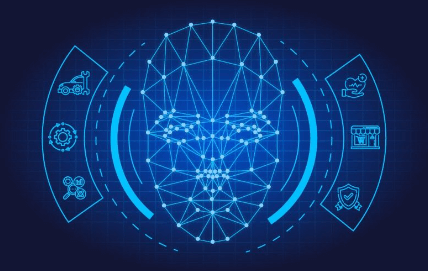Emerging and Future Use Cases of Emotion Recognition Technologies

On the absolute bleeding edge of modern facial recognition is the concept and technology is emotion recognition. These systems attempt to analyze a person’s face and voice to identify their current emotional state, plus other related metrics.
While this technology is only in its infancy, there is research actively being performed, and so new and unique use cases are being studied and created every single day. Advancements in this technology are thought to be able to make possible activities, as well as heighten immersion, in ways that have never been possible before.
How does Emotion Detection Tech Work?
Modern emotion detection tech involves the use of artificial intelligence and machine learning algorithms to be able to discern and identify human emotions and expressions.
Input
In the first step, data is extracted from some input mechanism. For facial emotion recognition, this usually involves a camera that captures expressions, which are subsequently analyzed for micro-expressions and muscle movements. Many systems rely purely on this form of input for emotion detection, and are able to work very effectively.
Other inputs might include speech recording using microphones, where things like pitch, tone and speed are analyzed. The input might also include body language analysis or even physiological indicators like heart rate, and so on.
Processing
Next the data goes through processing to prepare it for analysis. For facial emotion detection, this includes things like the extraction of features like the curvature of the lips, or the angle of the eyebrows. For voice analysis, this includes things like frequency, amplitude and so on.
Next, the data is run through an advanced algorithm that has been trained to be able to detect human emotions. This is usually through being trained on large amounts of ‘labeled’ datasets, which means data that has already been identified to be exhibiting a specific emotion. Deep learning technologies that use artificial intelligence make it possible to handle a high level of complexity in large datasets, meaning high levels of accuracy.
Output
The system thus processes the input data and discerns the emotional state of the user. It can then either provide its detection as the output, or take further actions depending on the programming and intended purpose of the system.
Emerging Use Cases
Now that we understand how these advanced ai emotion recognition systems work, let’s talk about some of the currently emerging use cases of this technology:
Emotion Detecting Wearables
Researchers working out of Ulsan National Institute of Science and Technology (UNIST) have developed a wearable device that is able to recognize and detect emotions in real time. It does this by using facial muscle deformation analysis as well as detecting vibrations in your vocal cords.
This technology can be applied in many different use cases. The one mentioned by the researchers is the idea of a ‘digital concierge’ inside of virtual reality environments that is able to provide personalized content and recommendations based on the emotional state and reactions of the user. Based on this data, it can recommend you music, movies and tv shows, books and more to suit your emotional state at that exact moment.
Emotion Based Customer Support
Affectiva, an AI-based company, uses emotion AI technology to analyze the facial expressions and vocal intonations of a user to discern their emotional state. Their technology is being used by many different advertising companies and agencies to evaluate audience reactions to advertising materials.
It is also used in different customer service related scenarios to both evaluate user experience and to enhance customer interactions by providing real-time feedback about customer emotional reaction and state to staff and representatives, so that they can tailor experiences accordingly.
AI-Based Emotional Support
A platform known as EmoAda has been developed by researchers at the Hefei University of Technology in China uses sensory data including face emotion recognition, voice and even text to detect user’s emotions. It then uses this data to provide personalized emotional support to users.
The system tries to provide support in the form of dialogues, it suggests different kinds of activities like guided meditation, as well as different kinds of music for further relaxation. In this way it attempts to provide initial, basic non-professional level psychological guidance to the user, designed for providing more natural and humanistic psychological support. The system is particularly known for its complete anonymity as well as availability whenever required regardless of the time it is accessed.
Closing Thoughts
While these are only some of the currently applied use cases of modern emotion recognition technology, we can expect to see many more creative use cases of these technologies in the future. Everything from more immersive gaming experiences, to personalized learning and education, better healthcare and emotional support systems, and even advanced robotics technology could benefit from the capabilities of emotion recognition technology and systems in the near to far future.




